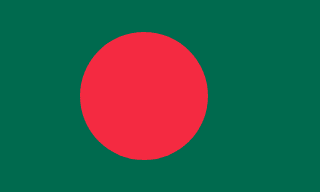Bangladesh - Environment

As far as the environment of Bangladesh is concerned, there have been . As for nvironment - international agreements, we have; .
About the environment of Bangladesh
| Climate | We have tropical; mild winter (October to March); hot, humid summer (March to June); humid, warm rainy monsoon (June to October) |
|---|---|
| Revenue from forest resources | |
| Revenue from coal | |
| Waste and recycling | Municipal solid waste generated annually: 14.778 million tons (2024 est.) |
| Total renewable water resources | 1.227 trillion cubic meters (2022 est.) |
| Major rivers (by length in km) | |
| Total water withdrawal | |
| Municipal | 3.6 billion cubic meters (2022 est.) |
| Industrial | 770 million cubic meters (2022 est.) |
| Agricultural | 31.5 billion cubic meters (2022 est.) |
| Land Use | |
| Agricultural land | 72.3% (2023 est.) |
| Agricultural land: arable land | arable land: 60.6% (2023 est.) |
| Agricultural land: permanent crops | permanent crops: 7.1% (2023 est.) |
| Agricultural land: permanent pasture | permanent pasture: 4.6% (2023 est.) |
| Forest | 14.4% (2023 est.) |
| Other | 13.3% (2023 est.) |
| Urbanization | |
| Urban population | 40.5% of total population (2023) |
| Rate of urbanization | 2.88% annual rate of change (2020-25 est.) |
| Major urban areas (Pop) | 23.210 million DHAKA (capital), 5.380 million Chittagong, 955,000 Khulna, 962,000 Rajshahi, 964,000 Sylhet, 906,000 Bogra (2023). |
All Important Facts about Bangladesh
Want to know more about Bangladesh? Check all different factbooks for Bangladesh below.
-
 Bangladesh Factbook
Bangladesh Factbook
-
 The Economy of Bangladesh
The Economy of Bangladesh
-
 Learn about the Government of Bangladesh
Learn about the Government of Bangladesh
-
 Communication in Bangladesh
Communication in Bangladesh
-
 Popular Universities in Bangladesh
Popular Universities in Bangladesh
-
 Enerny in Bangladesh
Enerny in Bangladesh
-
 Transport in Bangladesh
Transport in Bangladesh
-
 The Geography and society of Bangladesh
The Geography and society of Bangladesh
-
 The Environment of Bangladesh
The Environment of Bangladesh
-
 Military and security in Bangladesh
Military and security in Bangladesh